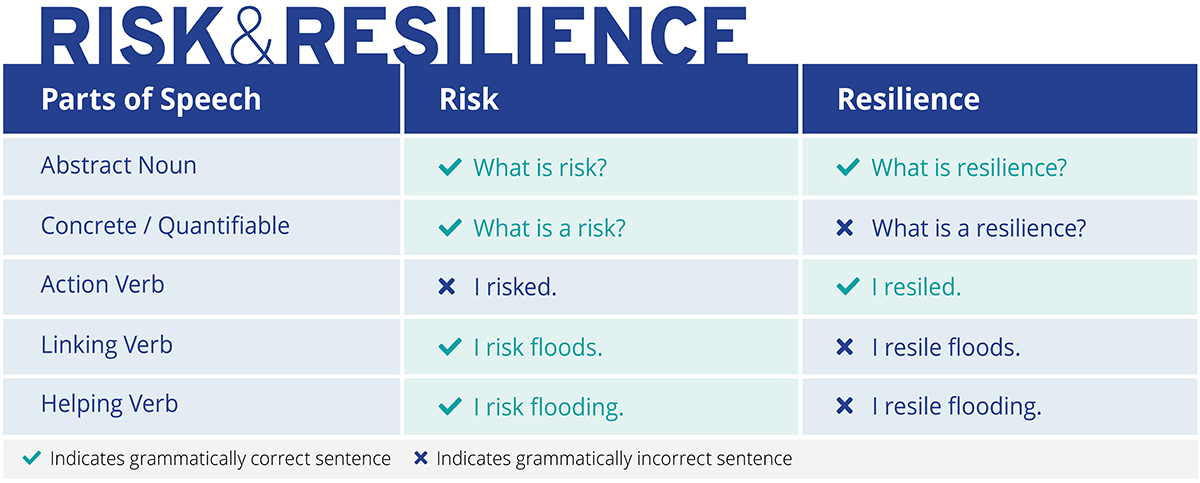Resilience Corner: Think of Resilience as a Verb, not a Noun - Energy Academic Group
Resilience Corner: Think of Resilience as a Verb, not a Noun
By Dan Eisenberg, PhD,
Department of Operations Research, NPS
Resilience is a “new” term creeping into military directives, but what does it mean and how do we use it to guide decisions? Part of the reason that resilience is so difficult to apply is that the word itself occupies an awkward position in the English language. Although resilience is used as a noun, the most popular definitions describe it as a capacity to act—which makes resilience an action that systems perform, like a verb, rather than a property that a system has, like a noun. There is a historical precedent to this way of thinking1, as the word resilience originates from the Latin word resilio, “to leap” or “bounce,” and first entered the English language in the 1500s as the verb resile, meaning, “to retract”, “to cancel”, or “to return to a former position.” Thinking of resilience as it was originally used—as a verb—has important implications for how we make military installations and operations more resilient.
Comparing different forms of the words risk and resilience illustrate this point2. While both risk and resilience work well as abstract nouns, only risk works as a quantifiable noun. This may explain why risk analysis across the DoD and federal government involves quantified threats, vulnerabilities, and consequences with little to no ambiguity. This may also explain the difficulty experts have coming up with quantifiable, concrete measures of resilience. Trying to measure resilience may simply be a lost cause, stemming from the linguistic fact that “to leap”, “to cancel”, or “to return” cannot be meaningfully counted.
In contrast, the action verb form of risk is a poor choice, whereas the word resile, although obscure, is nonetheless proper and useful. Risk works well as a linking or helping verb, but resile does not. This highlights the fact that risk management actions only pertain to a specific threat with known consequences (e.g., flooding). Instead we should think of resilience not just in the capacity to act, but in the action itself. Resilience flips our perspective from identifying and mitigating known risks towards understanding the systems, processes, and actions taken to manage any risk.
Consequentially, the tools and methods for measuring and addressing risks are not appropriate for resilience, as these two related concepts are fundamentally different. An appropriate risk-based question for a military installation is, “How can we mitigate the damages from the next flood?” Answering this question requires measures of future flooding probability and the likelihood that this flooding will damage military systems and results in recommendations to mitigate these impacts. On the other hand, an appropriate resilience-based question for the same installation is, “What do we do when we flood?” Answering this question focuses attention on understanding how floods are sensed, anticipated, responded to, and learned from on base and results in new systems that enhance these actions during disasters.

LEARN MORE
Email Dan Eisenberg at daniel.eisenberg@nps.edu or call (831) 656-2358.
References:
1. Alexander, David E. "Resilience and disaster risk reduction: an etymological journey." Natural hazards and earth system sciences 13, no. 11 (2013): 2707–2716.
2. Eisenberg, Daniel A. "How to Think About Resilient Infrastructure Systems." PhD diss., Arizona State University, 2018.
Quarterly Newsletter
Surge is published quarterly by the Energy Academic Group and covers a divese range of energy-related topics. View archive

